As a child what were your early influences towards cinema? Art, literature, graphics, photography?
My first introduction to Cinema was through film songs. My father is a big connoisseur of film songs, almost an Encyclopedia when it comes to the golden years of Hindi film music. In my earliest memories, I remember there was always some music playing in the house, mostly from All India Radio or my father’s huge cassette collection. And we used to play a quiz, where he asked me to guess the singer/composer/lyricist of a particular song. As I grew up, I got better at it. Trying to guess the music composer from the music arrangement was especially interesting. I think for me, that generated a keen interest in the ‘sound’ of the song and not just the tune or lyrics. We still play the quiz sometimes.
Also, I remember that watching cinema was a stipulated dose of entertainment in our family, and it still is. My father and my uncle (whom we visited in holidays) used to take us to watch films. Cinema was a family affair and everyone was equally excited to watch any film. Even today if any one of us likes a film, we make sure that all of us watch it together.
How did you first become interested in audiography? Most people don’t know about this field of cinema.
That’s true. Even I wasn’t aware of this field as a career, till I was about to complete my engineering. I didn’t even know much about FTII either. But I was always interested in trying to record sounds, like rain etc on my portable ‘AIWA’ walkman. Also my parents tell me that since childhood, I used to mimic sounds; not just people’s voices, but other sounds too. So maybe I had an inclination towards it, but I surely didn’t have ‘a dream since childhood’ to work in the film industry.
In my college years, I was actively involved in theater. I used to write, act, operate music in the vibrant inter-college play competitions that happen in Pune, like Purushottam Karandak, Firodiya Karandak etc. I was very much involved in it, while also enjoying my engineering studies. During this time, I met Satyajit Kelkar who himself is an accomplished flutist and sound engineer. He introduced me to the world of recording at his home studio, and also to his friends at FTII like Anmol Bhave. Through them, I visited FTII campus and I was in love with the place! That day, I decided to get an admission there and make it my career.
But to be honest, till that point I only had music on my mind. I thought I could be a music recording/mixing engineer. But the real world of ‘sound’ (beyond songs and music) opened up for me, only after I joined FTII. When I learnt about the various roles an audiographer plays in a film, particularly the sound design part, I realised that this is the right field for me.
I think it was a process of gradual evolution, rather than an overnight one. I was always interested in every aspect of film-making right from writing, directing, camera work, editing, etc. And thankfully, FTII gave me the opportunity to try my hand at everything while I discovered my first love, that is ‘Sound’.
What steps did you take to train yourself?
In college days, I used to try and record various sounds just for fun. For inter-college plays, I started collecting various music tracks and editing them to suit the situation and timing of the play. This led to a basic introduction of sound editing softwares. I also loved playing various musical instruments since childhood, and I played them fairly well without any formal training. So I always had an ear for music.
But I think my conscious training started the day I decided to join FTII. That’s when I started focussing on the sound and music pieces used in films. I became conscious of the intentional use of music, sounds and even silence. I think that’s the first step, when you start listening carefully. Then I started watching various kinds of films- World Cinema, regional classics, and started reading about them. Access to FTII facilities like the library and screenings through friends also became a major source of training, which in turn helped me prepare for the FTII entrance. I also assisted on a few FTII projects as a production assistant, even before I got an admission. I learnt quite a lot through that.
And once I entered FTII as a student, it was really like finding a huge treasure! Books, films, discussions, assisting seniors, our own projects, visiting faculty, workshops, seminars.. and fortunately, we had Prof. Satish Kumar as our HOD. He contributed a lot to my personal growth; both technically in terms of Theory of Sound and aesthetically, in terms of understanding Sound for Cinema. Also, training is an ongoing and never-ending process. Every project that you do always teaches you something new.
Have you assisted anyone? How does it help one?
Yes, I got to assist quite a few great audiographers (including sync sound recordists, sound designers, mix engineers & music engineers). I started assisting Anmol Bhave in 2008 and have been working in close collaboration with him since then. I have also assisted Subash Sahoo on many films and worked as his associate for a long time. Apart from that, I assisted Resul Pookutty, K.J.Singh, Nihar Samal, Pramod Thomas to name a few.
It helps greatly in my opinion. Firstly, you get to apply all the knowledge gained at the institute straight into mainstream projects. Secondly, you get to observe and learn a great deal from the person you are assisting. Their experience and approach towards work is what you can learn just by working under them. You learn not just technical stuff, but all sorts of management as well – time management, resource management and people management! And another important part is that you get to build a good network when you are working with such great people. This network is what helps you work independently at a later stage.
How did your first film project come about? Tell us something about the experience.
As an assistant, Marathi film ‘Gandha’ was my first film project. Anmol Bhave was the sound designer for that. He gave me a chance to do the ‘pilot sound recording’ and ‘sound effects recording’ for that film. That was my first commercial film work.
As an independant sound designer, ‘The Seventh Walk’ (directed by Amit Dutta) was my first project. Savita Singh who was my senior at FTII, was the cinematographer for that. She had seen my work earlier and it was she who recommended my name to Amit Dutta. Amit was based in Jammu, so I travelled to Jammu with all the sound equipment. We set up a home studio at his house and did all the work there. It was a highly experimental setup and we went on inventing the process step by step. It was a 70-minute long film, without any human voice (no dialogue/voice-over/narration) and minimal music. So I got the scope to create a narrative using only nature and foley sounds. Getting to know Amit’s interesting personality, his wealth of knowledge and outstanding thought process was another gain for me. On top of that, the film was very well received across the globe and the sound design received a special mention everywhere. So in all, my first film project was quite fruitful for me!
How do you decide on the sound design of a film, apart from what comes naturally from the script? What are your inspirations?
First and foremost, I try to understand the director and his vision for the film. Cinema (or any art) is very subjective, there are a hundred ways of telling the same story. I try my best to understand ‘his’ way. Then comes the script. It presents most of the functional ideas for sound design- the premise, the locale and the graph of events. Then the next stage of inspiration for me, comes from the visuals along with the edit pattern. Both these elements inspire and guide me immensely in terms of choosing the sound textures, capturing/creating the mood and constructing a graph. Just like a poem brings its own words (and sometimes even the tune) with it, the visuals often call for their own soundscape. The image, the edit and the sound together has to become a single, homogeneous narrative. How to achieve it, is the most challenging part.
Sometimes, there’s a music piece that inspires me. Sometimes, it can be a memory that I relate to a scene or a character. I try to recall the sounds heard when in similar situations, and try to recreate them interestingly. I consciously try to bring out the sounds relating to the protagonist’s state of mind, his thoughts etc and experiment with them. One more thing I do while designing sound is, I imagine that there’s going to be no music in the film. So I try to use layers of sounds which serve the purpose of background score, sounds that suggest the mood, sounds that have a progression. This helps in making the soundtrack less dependent on music. For example in ‘Trijya’ (the film that received the National Award), we haven’t used ANY background music except a musical drone. Instead, I have used a lot of ambient music (songs or music that’s part of our natural surroundings and sources like radio, TV etc) in such a way that it almost works as a background score.
Is Sound Design intuitive or is it something you learn?
I think it’s a mix of both. You have to have a natural aptitude and intuition towards it, there’s no doubt in that. Everything cannot be taught. But formal training (at a good film school like FTII) helps to a great extent. Knowing the theory, studying all aspects of cinema & its history and trying to apply all this in your own projects gives you a good starting point. After that, it’s upto you to take it forward.
In our industry, we have plenty of examples of both the kinds- Sound designers who had a formal training and those who didn’t. While people like Mangesh Desai have proved that formal training is not a necessity and you can excel in this field even without it, we can also see that the majority of the top sound designers in the industry are from FTII. So I think an intuitive mind combined with a good learning surely makes a better sound designer.
What is your genre? (What genre do you enjoy most)
I’ve had the fortune of working across multiple genres like Horror, Psycho Thriller, Crime, Comedy, Musical, Romance, Children’s films etc. I’ve also been a part of some bold experiments like The Last Act (India’s first collaborative feature film), Rakkhosh (India’s first POV film), Tumbbad (a unique film in many ways), The Seventh Walk (no dialogues), Trijya (no music) etc. I think it’s difficult to single out a genre, because each one has its own kind of pleasures and challenges. But I really enjoy working on films that have a great scope for experimenting with sounds and less dependent on dialogues and music, be it any genre!
https://youtu.be/sY-GEesy6wI
What part does risk-taking play in your work, if any?
There’s not much physical risk involved in Sound work, unless you are standing on the train track to record a train sound! Haha.. 😉
But every new project that comes up, is a risk in a way. Sometimes the risk can be financial, like a few experiences I had in the past where even after proper completion and submission of work, I had to struggle a lot for the payment. In such a case, me, my team and the studios, we all had to suffer for no fault of ours. Sometimes it’s a risk of working with a director or team that’s new to me. The kind of expectations and dedication required from each other might not be the same, which is quite disappointing to discover when we are midway into the project. And sometimes, we tend to trust the script when we accept a project. But when I see that the edited film is nowhere close to the script (if it’s gone wrong in execution), it’s difficult to keep working on it with the same zeal. Nevertheless, I must say that it’s this risk-taking ability and trusting my intuitions that has landed me some really good projects. All the experimental films that I mentioned earlier, posed different kinds of risks and I’m happy that I took them. I was rewarded well in the end.
Film technology is continuously changing. Do you think it affects you as an audiographer, in the way you want to tell stories?
Yes, It does in certain ways. In the past, we did have examples of people like Mangesh Desai who created miracles in the available limited technology. You could feel the movement, depth and perspective even when the sound system was mono. But with the evolution of sound technology from mono to stereo to digital surround sound to present day immersive sound, there’s a certain change in the way sound can add to the storytelling. Today it has become very realistic and immersive. Even if the basic elements of the soundtrack remain the same, there’s a lot of ‘space’ created to ‘place’ them, to create a life-like cinematic experience. Cinema is an Audio-visual experience, it’s a medium that’s highly dependent on technology. A film that is conceived keeping this in mind, usually gives a greater cinematic experience. Of course, content is always the king. No technology can help make a great film out of poor content. But a good content can surely be turned into a great film by optimum use of the latest available technology. As an audiographer, that’s precisely my job to help the director tell the story through sound. I need to be aware of the tools available at my disposal and be able to use them in the best possible way to tell the story!
Your favorite films or audiographers? At least two of them?
Favourite films- Sound of Metal, Hunterrr, Shonar Kella, Stree, Gabhricha Paaus
Favourite audiographers- Mangesh Desai, Nicolas Becker, Randy Thom, Walter Murch, Minoo Katrak, Ravindra Sathe
You have an extensive repertoire of work. Which film did you enjoy the most working on and why?
Some of the films that I’ve done are also a part of my list of favourite films and I enjoy watching them. Some of my works like ‘The Seventh Walk’ or ‘Pamphlet’ (short film) are my favourite works. But talking of one film where I enjoyed the process most, it would be ‘Nadi Vahate’. There are multiple reasons for that, the foremost is the Director’s approach and patience. Having directed a film like ‘Shwaas’ back in 2004 (which won the President’s Gold Medal and which was one of the leading films that started a new wave of meaningful films in Marathi and regional films in India), Sandeep Sawant spent a considerable time in research, pre-production, shooting and editing of ‘Nadi Vahate’. And he had very clear ideas about the film’s sound. For him, it was not ‘just a technical process to finish off a film’. He was very particular about the use of every sound, be it dialogue, foley, sound fx or ambience. He and our Sync Sound Recordist Suhas Rane had made an extensive recording of various sounds on location, which was sorted and arranged into different folders. Sandeep Sawant even had a chart of sound fx to be used scenewise. This made my life quite easy. Also the treatment he had used, the beautiful visuals and the poignant edit were quite inspiring. We made multiple sonic versions of certain scenes, from a minimalistic approach to an all-out heavily layered one, to try and see what works best. My associate Sachidanand Tikam also spent a very long time on it and contributed a lot to the design. We also experimented quite a lot at the mixing stage. So that’s one film where I got to work to my own satisfaction and get a result that was better than the Director’s expectations!
Any hurdles you have encountered in your journey? Things that are blocks in achieving your vision while making your film.
There are mainly two hurdles commonly faced by most Sound Designers – one is the tight budget and second is the tight schedule. Since sound design comes last in the pipeline, it suffers a lot from the issues in all other departments at every previous stage. Speaking of a typical mainstream film setup, they usually go over budget & over schedule at pre/shoot/edit stage and they want to compensate for it in sound post. So most of the time, there is barely enough time & budget to finish the work just on the deadline. This leaves hardly any scope for experimenting or even doing the basic work in a relaxed manner. The undue stress created by this is a big hurdle, and it’s avoidable in my opinion.
Also the few experiences as I mentioned earlier where there is a payment issue, create a hurdle. When we have spent a lot of time and effort on a particular film, I think it’s only fair to expect timely payment of the amount (which is already negotiated a lot!) Having to follow it up beyond a point again creates an unnecessary stress.
Do you often get all that is in your wish list or is it a hard bargain every time?
Well, I have recently started getting most (if not all) things in my wishlist. But it was a hard bargain till recently and it still is, sometimes. Unfortunately, it’s a fact that most people (even from the film fraternity) don’t understand sound and its importance. By nature, sound is so invisible that people don’t easily understand what goes into creating it. Sometimes, it becomes difficult to explain and convince the concerned people if there are any special requirements for sound. It might not be a very expensive or difficult thing to get. But many people are reluctant to take any extra step for sound. That’s primarily because they are not aware of the impact and importance of it. So it has also become a part of our job to try and create this awareness.
What is in the kitty now?
At the moment, I’m doing the Sync Sound for a very interesting web series, but I can’t reveal much as of now. I just finished the Sound Design of a Hindi film ‘Baat itni kaafi hai’ (directed by National Award winning director Makarand Mane, with Vaibhav Tatwavadi-Anjali Patil in the lead). There’s another Hindi film in process, called ‘Kaalicharan’. It’s a very interesting, experimental, indie film where I’m getting to explore a whole lot of new ideas. Also, I’m working on a couple of really nice short films which are in the design stage. Then there’s a play directed by Amol Palekar (where he also plays the lead) for which I have done the Sound Design. It has been very well received all over, when it opened last year. Now we are waiting for the current pandemic situation to normalise, so that the shows can start again. So in all, there are a few interesting projects coming up which I’m eagerly looking forward to!
Any advice to the aspiring audiographers?
Well, I don’t consider myself experienced enough to advise others. But I can surely share an insight from my personal experience. And that would be ‘Stick to your dreams and make it happen.’ At one point, it seemed an impossible dream for me to get admission in FTII with no film/art background as such. Then while working in the industry, I had to wait for a long time for my first commercial film to come by. Even after that, there have been moments of uncertainty and occasional bad patches. But just sticking around and being at it is the key. Instead of getting disheartened, one needs to keep giving his best every single time. That’s the only way to crack it.
Any memorable blunders?
Haha, yes. On one of my initial projects as an assistant, I had done the pilot sound recording. The film being shot on a film camera, there was a constant camera noise in the pilot sound. Of course there was nothing new or wrong in that and everyone expected it to be there, as the film was anyway going to be dubbed in the studio. But in my over-enthusiasm, I wanted to try and clean that pilot sound. I managed to put my hands on a noise-cleaning plugin and tried removing the camera noise without any proper knowledge. The camera sound did vanish, but the dialogues started sounding very hollow in the process. When I gave that sound to the editor, he got baffled by that voice quality. When I explained what I had done, he said, “Who told you to clean the pilot sound in the first place?” Thankfully, I had the original version saved with me, which I gave him. But the lesson I learnt was ‘Do not try to fix what’s not broken’… and I learnt it the hard way! And I also learnt the value of the ‘Save as(s)’ function.. 😉
Your dream project?
I want to create a kind of Sound Installation, or maybe an Audio-visual Installation, which will create an awareness among people regarding the wonderful gift of hearing that nature has given us. There are so many beautiful moments and emotions that we experience because of our sense of hearing. There are numerous tones and textures of sound that we are capable of hearing. We keep hearing them all the time, without much attention to it. The pandemic has made us aware of the importance of life, of relations and of the little moments of joy in life. I want to add the joy of sound to that list and wish to make people experience it and appreciate it through my work, so that they can enjoy it all their life! I hope this dream comes true soon..
Mandar’s IMDB Profile is here.
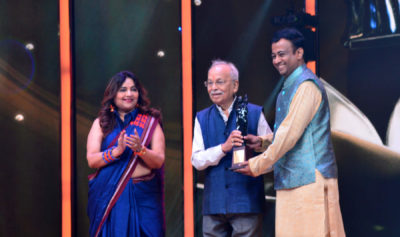

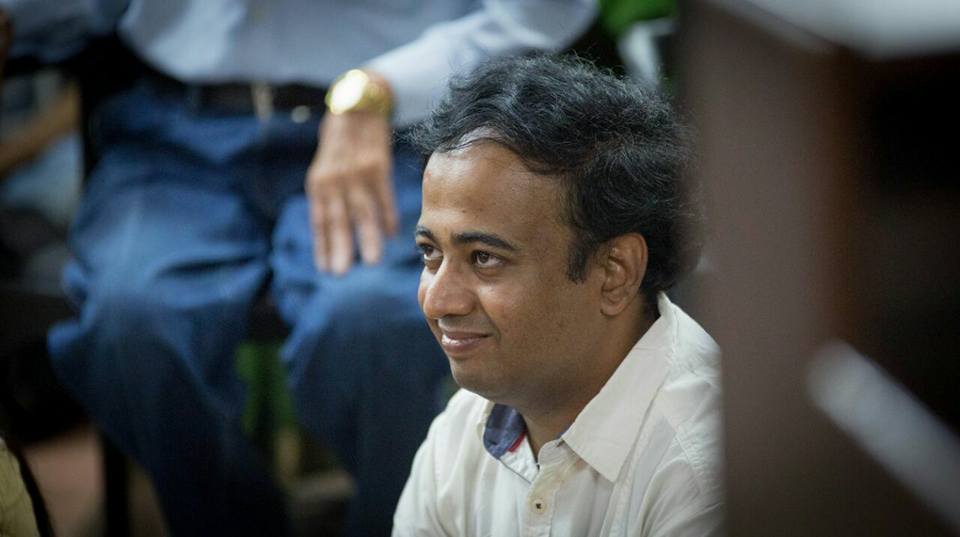
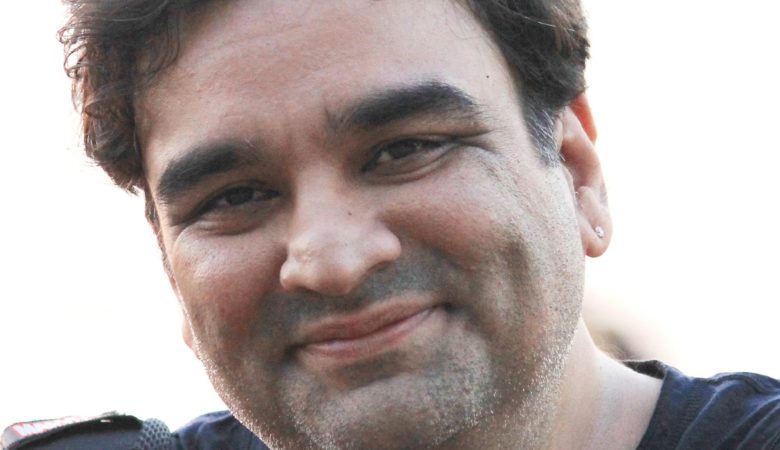
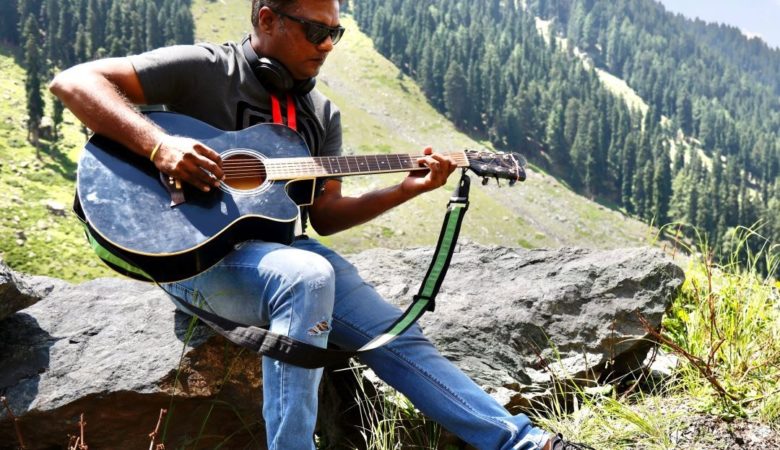
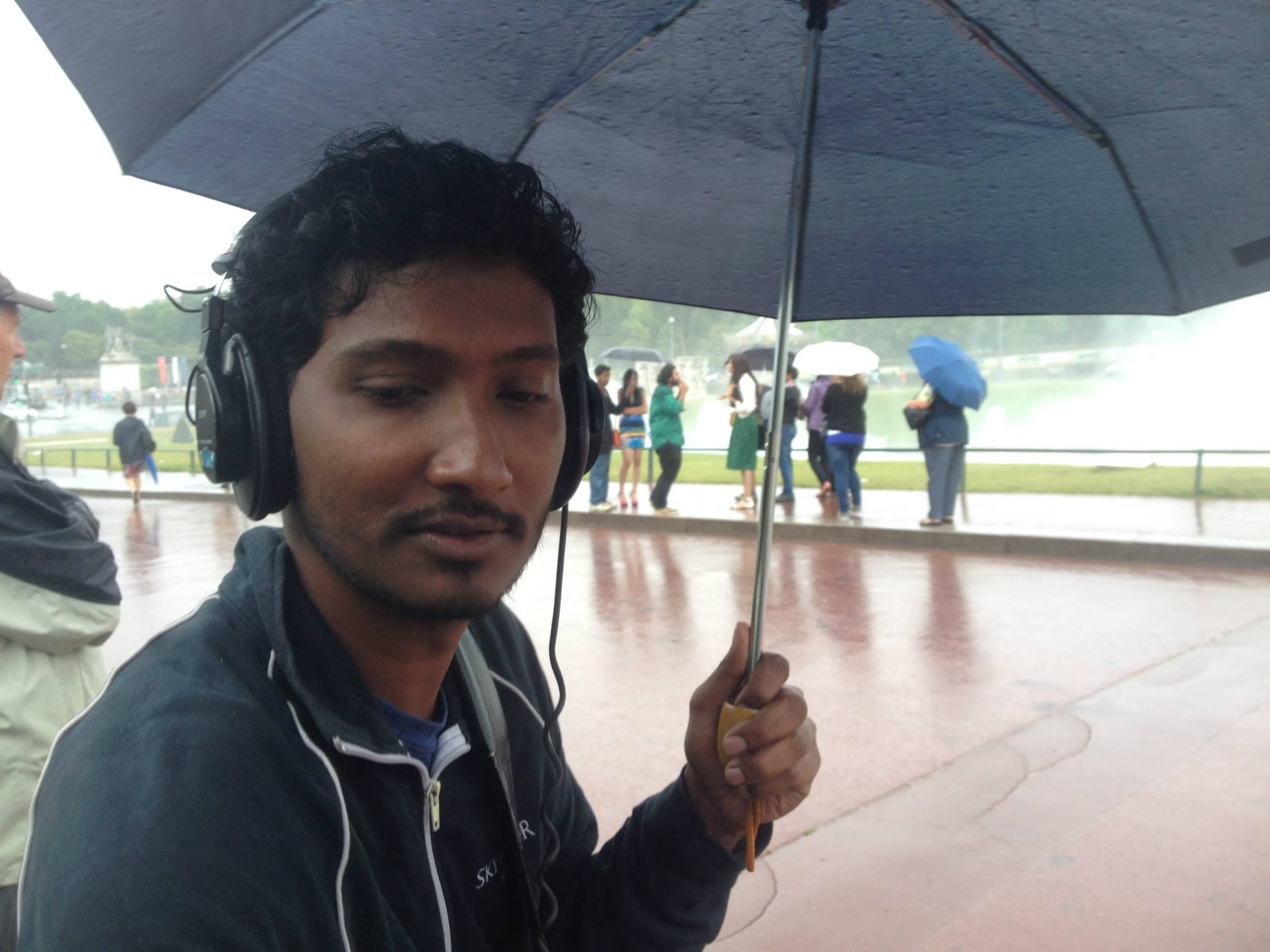



Congratulation on the excellent performance and interview was very detailed and from the heart. Keep up the great show and all the best for many more
Very helpful interview for new comers who are really passionate about sound and ready to work hard..very good audiographer and more then that very nice person “Mandar” proud of you…
Superb Mandar !! Wish you a well going forward….
— Abhijit